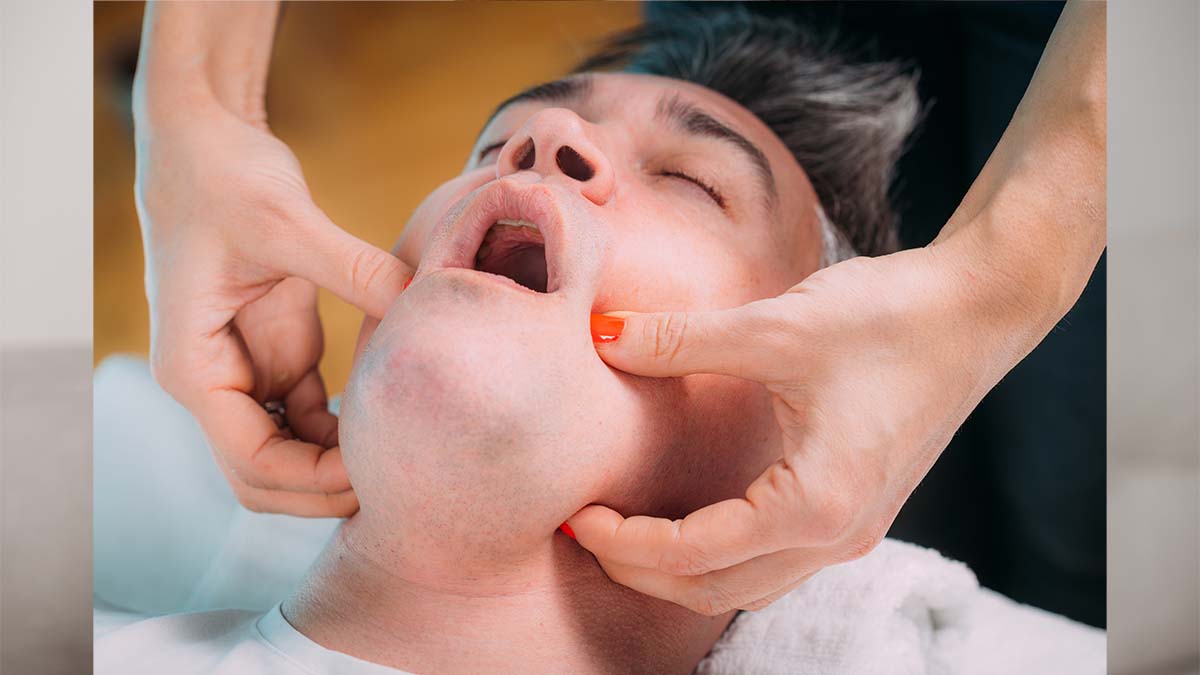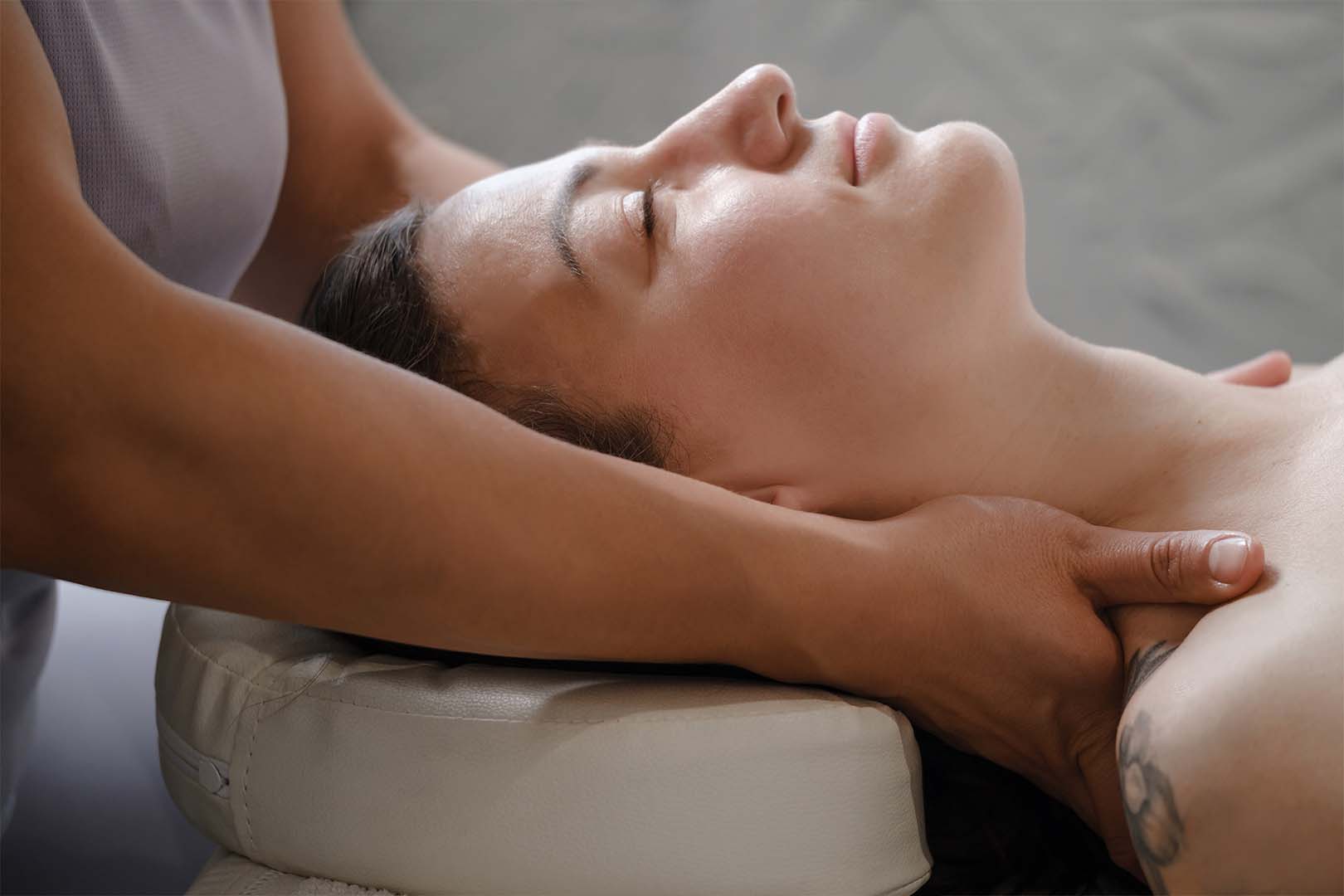Some people describe facial pain as “a nagging toothache.” Other times, the tooth is healthy and the problem lies in the masticatory muscles and the joint that guides jaw movement. Temporomandibular dysfunction does not exist in isolation within the mouth. The tongue, neck, posture, stress, and sleep all play a role. This is where specialized physical therapy comes in as a partner to dentistry: it assesses movement patterns, reduces pain, and restores function, using conservative techniques and training geared toward everyday life.
What exactly is temporomandibular dysfunction and how do we identify it?
We are talking about a set of conditions involving pain in the masticatory muscles and temporomandibular joint, limited opening, or joint noises. Modern assessment is based on DC TMD, a validated clinical protocol that helps distinguish between myofascial pain, disc displacement, and other intra-articular changes. During the consultation, it is important to connect the dots: where it hurts, what aggravates it, how the opening is and where it deviates, what habits exist during the day and at night. Drawing up the right map allows us to define a realistic plan that combines education, self-care, physical therapy, and, when indicated, occlusal splints and other conservative resources.
What physical therapy does and why it works in the context of TMJ
Physical therapy for TMJ is multimodal. It combines manual therapy to modulate pain and tension, gentle joint mobilization to gain range of motion without irritation, specific exercises to coordinate opening, laterality, and protrusion, and postural and respiratory training to break patterns that maintain overload. When appropriate, thermotherapy, adjuvant electrotherapy, and relaxation techniques are added. The rationale is simple: reduce pain, restore comfortable movement, and give control back to the patient. Evidence has been consolidating the benefits of manual and exercise approaches on pain, maximum opening, and disability, albeit with generally modest effect sizes and depending on the quality of the studies. Translating this into practice: it works best when well indicated, with realistic goals and adherence to home routines.
Pain, routine, and habits: the triangle that determines the outcome
Painkillers can help in acute phases, but they do not re-educate movement. The occlusal plate protects and redistributes, but it does not correct everything on its own. Physical therapy works on the missing piece: how you move, how you rest, and how you deal with repetitive tasks throughout the day. Pain increases when you chew very hard foods, when you spend hours at the computer with your chin protruding, when you yawn with your mouth wide open, or when your tongue pushes relentlessly. An effective plan includes achievable micro-habits. Breaks for cervical and scapular mobility, remembering the resting position of the jaw with the tongue on the palate, limiting unnecessary maximum openings, learning to distribute effort between sides. Small adjustments add up. This is how you break out of the cycle of pain – protection – more stiffness – more pain.

When to refer, when to insist, and when to stop
Red flags exist and require attention. Progressive pain that does not respond to conservative measures, frequent locking with inability to open or close, persistent inflammatory joint pain, acute trauma with suspected fracture, unexplained weight loss, or associated neurological complaints require targeted investigation. Outside of these scenarios, the rule is to start conservatively. Guidelines emphasize non-invasive measures as the first line of treatment. Physical therapy is started early, preferably integrated with dental care to adjust plates, sleep hygiene, and medication when indicated. Success is measured by reduced pain, recovered useful function, and autonomy to prevent relapses. If there is no response after a reasonable cycle of treatment and exercises, the diagnosis is reevaluated, and alternatives or comorbidities that are maintaining the pain are considered.
What to expect in practice and how to measure progress
At Clinicalvor, we provide and advise on specialized TMD physiotherapy, integrated with dental medical evaluation when necessary. The approach is conservative, functional, and aligned with your routines, so that progress does not depend on endless treatments and so that you know what to do if the symptoms return.
The first session clarifies objectives and defines simple metrics. Pain at rest and when chewing, comfortable interincisal opening, presence of clicking, and whether there is a C or S deviation when opening. Based on this, a plan is put together for a few weeks. The patient learns short exercises to do at home two or three times a day. The physical therapist monitors the response and adjusts the technique, dosage, and progression. Typical results include a gradual decrease in pain, increased functional opening without fear, reduction of disturbing noises, and greater tolerance to previously limiting tasks such as eating apples, yawning, or talking for long periods of time. It is important to align expectations. In some cases, the goal is control and autonomy rather than a “permanent cure.” Knowing how to recognize early signs and resume exercises in a timely manner prevents regression.
Conclusion
Temporomandibular dysfunction is more than just a “tooth problem.” It is a musculoskeletal disorder that is linked to posture, habits, and stress. Specialized physical therapy makes a difference because it acts where the pain originates and persists. It combines techniques that provide relief and strategies that change behavior. Integrated with dental medicine, it increases the likelihood of solid results without resorting to invasive solutions. The path is rarely spectacular from one day to the next. It is consistent, measured, and cumulative. This is how you can open your mouth again with confidence.
References
https://www.rcseng.ac.uk/-/media/FDS/Comprehensive-guideline-Management-of-painful-Temporomandibular-disorder-in-adults.pdf Royal College of Surgeons
- https://pubmed.ncbi.nlm.nih.gov/33126108/ PubMed
https://dmp.umw.edu.pl/en/article/2024/61/1/5/ dmp.umw.edu.pl
https://www.cureus.com/articles/386613-physiotherapy-approaches-for-temporomandibular-disorders-a-multimodal-conservative-management-strategy.pdf cureus.com
https://pmc.ncbi.nlm.nih.gov/articles/PMC11353764/ pmc.ncbi.nlm.nih.gov



